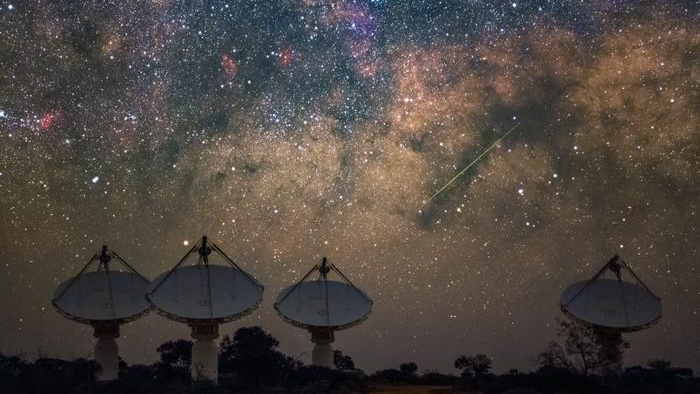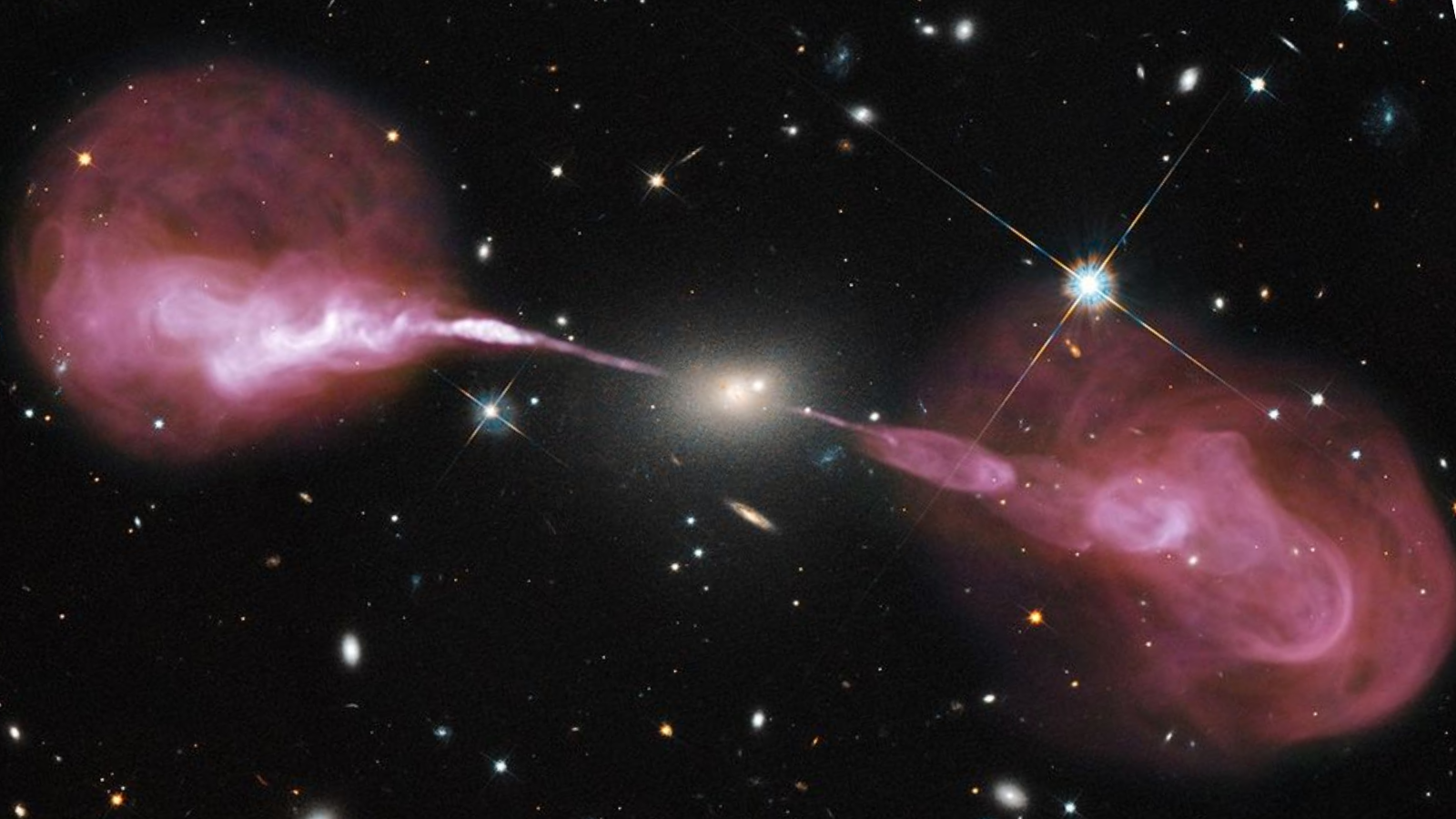Astronomers have discovered a staggering clutch of 15 new Giant Radio Galaxies within the "Sculptor Field" view of Australia's Square Kilometer Array Pathfinder (ASKAP) telescope. This is a big deal because Giant Radio Galaxies are the largest single objects in the known universe, each wider than 2.3 million light-years across.
These new examples range in size from 3.7 million light-years to a staggering 12.4 million light-years wide. For context, the Milky Way is around 105,700 light years wide. That means our galaxy would fit across the largest of these new Giant Radio Galaxies, designated ASKAP J0107–2347, over 117 times.
ASKAP J0107–2347, located around 1.5 billion light-years away, is also remarkable because it features two sets of radio lobes, one inside the other. The inner lobes are bright and short, while the outer lobes are faint and elongated. This nesting doll-like structure could hint at how Giant Radio Galaxies get so big.
"Giant radio galaxies are the biggest single objects in the universe. They are similar in size to the whole Local Group, which includes the Milky Way, Andromeda, and lots of dwarf galaxies," team leader and Western Sydney University researcher Baerbel Silvia Koribalski told Space.com. "We wanted to find out how Giant Radio Galaxies grow sooooo big."
Giant Radio galaxies and black holes
Koribalski explained that typically, a Giant Radio Galaxy is a massive elliptical galaxy that has a supermassive black hole at its heart. When these black holes are feeding on surrounding matter, creating a region called an Active Galactic Nucleus (AGN), they blast out powerful jets of matter at near-light speeds.
All large galaxies are thought to have supermassive black holes at their centers, and many of these are feeding or "accreting" matter and thus sit in AGNs while exhibiting jet activity. What sets Giant Radio Galaxies apart is the fact that their jets stretch out for 2.3 million to 15.3 million light-years, creating vast twin radio-wave emitting lobes around these galaxies at the shock front of these jets.
"Sometimes these supermassive black holes are feeding, and powerful radio jets are seen to emerge from near the black hole," said Koribalski. "Other times, the supermassive black hole is inactive, so we see no jets and the lobes that formed around the head of the jet slowly fade."
That is, the researcher added, unless the jets and lobes are re-energized. Mergers between galaxies are thought to play a role in restarting supermassive black hole activity, thus recharging tese jets and creating a second brighter set of inner lobes.

To investigate this phenomenon as well as fading radio lobes, Koribalski explained that three things are necessary: high sensitivity, good angular resolution, and relatively low observing frequency. ASKAP, a 6-kilometer diameter radio interferometer array comprising 36 telescopes in Western Australia, provides high-resolution, wide-field radio images and thus fits that bill nicely.
"Because ASKAP is equipped with novel, wide-field receivers, Checkerboard Phased Array Feeds that look like a chess board, we can carry out huge sky surveys," Koribalski said. "In each observation, we see an area of 30 square degrees, while previous radio interferometers would see around one square degree. So, each image produced by ASKAP is a treasure trove!"
The ASKAP data used by Koribalski in this research was centered around the starburst galaxy NGC 253, or the "Sculptor galaxy," located around 8 million light-years away, creating the deepest ASKAP field yet, the Sculptor field.
"While inspecting this deep ASKAP field, I found an unusual number of Giant Radio Galaxies, not only physically very large, but also large in terms of their angular sizes," Koribalski said. "The latter, together with the depth of the field, makes it possible to study these Giant Radio Galaxies in great detail, in particular their morphology, symmetry, and ages."

"Back to the question of how do Giant Radio Galaxies grow so big? It seems that unless something is impeding the lobe expansion, they will continue to grow, expand, and fade," Koribalski said. "So, in many cases, we detect the old, outer radio lobes plus a new set of young, inner radio lobes plus jets, created when the supermassive black hole activity restarted. This allows us to study the timescales on which AGN switch on and off."
As for the cause of these cut-off periods, Koribalski added that the radio lobes are created in galaxy clusters. That means that so-called "cluster weather," the dynamic interactions that occur between galaxies in clusters, can play a big role in shaping radio galaxies, stopping their expansion or creating structures like wide-angle radio tails, jellyfish tails, or merged tails as seen in the Corkscrew Galaxy.
The ASKAP data could help to get to the bottom of Giant Radio Galaxy growth, because whereas the old lobes of these huge galaxies are so big, diffuse, and faint that they are generally not detectable in shallow surveys, the ASKAP surveys are deep enough to see these fainter structures.
ASKAP J0107–2347 is a prime example of this form of galactic archeology, and it could soon be joined by many more double-lobed Giant Radio Galaxies, helping to crack the mystery of these vast cosmic structures.
"ASKAP will massively increase the number of Giant Radio Galaxies near and far," Koribalski said. "ASKAP's sky surveys deliver so much data that even rare objects can now be detected in larger numbers."
A preprint version of the team's research is published on the paper repository site arXiv.

.jpg) 4 hours ago
1
4 hours ago
1

 English (US)
English (US)